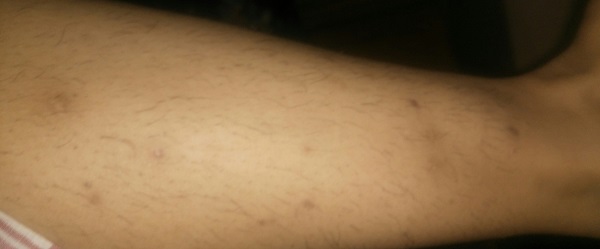
How do I deal with scars on my legs?
Dear Mirror Doctor, I am a student in one of our senior high schools and I have so many scars on my legs because my skin is very sensitive.
Advertisement
As a result, my mates tease me a lot, particularly my male colleagues. This is affecting me greatly. Please, is there any help to deal with these scars?
Worried girl, Accra.
Dear worried girl, I really share your pain about scars on your legs. Understandably, being a female and more importantly, the attitude of your peers are added reasons to be worried. Also, it is perfectly normal for you to worry about your scars because at your age, you are expected to devote a lot of time to your appearance, dress and grooming among others. This is largely influenced by your hormonal changes at puberty.
Furthermore, people at your age tend to be extra sensitive and thus pay particular attention to the minutest of deviation from normalcy. However, you need not worry so much as this may be a transient but challenging phase of your growth and development.
A scar is a blemish left on the skin after a surface injury or wound has healed. The human body was designed by our creator, to sustain a variety of aggressions, including penetrating trauma, burns and blunt trauma.
All of these incidents set into motion an orchestrated chain of events that culminate in the healing response. Eventually, the healthy functional tissue (skin) is replaced by connective tissue (scar). The curing response is characterised by the movement of specialised cells into the damage site, resulting in a scar.
When the skin is cut or broken, the body mobilises a wound repair process. The blood vessels constrict, and clots form to minimise blood loss.
A scab, or hardened crust, forms over the top of the wound. The scab acts like a natural covering to protect the area while the body continues the repair process.
Tiny fibres of special protein fill in the hole and eventually reconnect the ends. By the time the scab naturally falls off, much of the initial repair has been finished.
However, the area is far from healed. Depending upon the size, depth and location of the injury, it can take months to years for the skin to return to normal strength.
Scar formation is a natural part of the healing process. A scar forms from excess amounts of these special proteins in the wound as the body attempts a repair.
Many scars eventually fade. But they tend not to go away completely. Generally, the larger the wound, the longer it takes to heal and the greater the chance of a visible scar.
Sometimes the body goes “overboard” in the healing process, especially in people with very sensitive skin, leading to the development of thick and/or raised scars. There are several types of these "problematic" scars.
Hypertrophic scars are raised, pinkish-red in the white skin or dark areas (in the dark skin) located inside the borders of the original injury. They are often described as "itchy". In some cases, hypertrophic scars shrink and fade on their own.
Keloids are raised, deep-red/dark areas (depending on one's skin colour) that tend to cover much more area than that of the original injury. Even when surgically removed, keloids tend to recur.
Atrophic scars are skin depressions, like those that sometimes form from severe acne (pimples). They are caused by inflammation that destroys the collagen during the rebuilding process, leaving an area of indentation.”
Contracture scars result from burned skin which heals with tightening of the skin, impairing the ability to free movement.
Scars can and do cause serious cosmetic and emotional concerns for some people especially females. Since scar formation is a natural part of the wound healing process, they can't be entirely prevented. Fortunately, though, most scars fade with time.
I don’t know which type of scars you have but whichever it is, you need to be very careful about the cream you apply to your skin. In an attempt to get the scars off most people tend to use skin lightening creams which paradoxically make the scars stand out since they bleach the skin around the scars.
With no effect on the scars. Sometimes, you may need to take antihistamines and, in some instances, stronger modulators of the immune system which dampen the body's allergic response.
Treatment of scars obviously will depend on the type of scar you have. Some of the methods that have been tried with variable successes include various skin care products including cream and lotions, laser treatment (Dermabrasion), steroid injection, Botox treatment among others.
I would, however, advise you to see a dermatologist (skin specialist) to categorise the kind of scars you have and the treatment option. A clinical psychologist consultant can also be helpful for your self-esteem.
A member of Paediatric Society of Ghana




